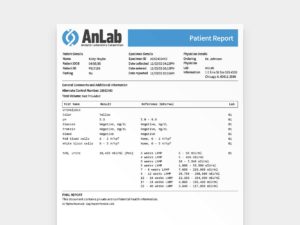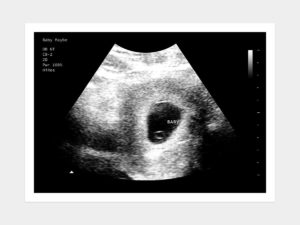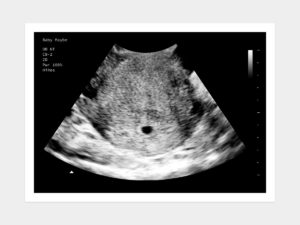
Ultrasound technology plays a crucial role in the management and monitoring of high-risk pregnancies. By providing real-time images of the fetus and the maternal reproductive system, ultrasounds allow healthcare providers to diagnose, monitor, and if necessary, treat conditions that could pose risks to the health of the mother or baby. This article explores the various ways in which ultrasounds contribute to the care and management of high-risk pregnancies.
A pregnancy is considered high-risk when there are potential complications that could adversely affect the mother, the baby, or both. High-risk factors can include maternal age (under 17 or over 35), medical conditions (such as hypertension, diabetes, or autoimmune disorders), pregnancy-related conditions (like preeclampsia or gestational diabetes), and issues identified in previous pregnancies.

Ultrasounds are instrumental in diagnosing conditions that contribute to high-risk pregnancies. Some of these include:
In high-risk pregnancies, more frequent ultrasounds are used to monitor the growth and development of the fetus. This includes measurements of the baby’s size, weight estimations, and assessments of vital organs and structures to ensure they are developing normally. These measurements help identify any deviations from normal growth patterns early on.
Ultrasound can assess fetal health and well-being through biophysical profiles (BPP) and Doppler ultrasound studies. The BPP examines fetal heart rate, movement, breathing movements, and amniotic fluid volume to provide a comprehensive view of the baby's condition. Doppler studies assess blood flow in the umbilical cord, brain, and other organs to ensure the fetus is receiving adequate nutrients and oxygen.
Multiple pregnancies automatically fall into the high-risk category due to the increased likelihood of complications such as premature labor and fetal growth restriction. Ultrasounds help in monitoring each fetus individually to ensure they are developing at a healthy rate and to detect twin-to-twin transfusion syndrome (TTTS) early, which can be life-threatening if untreated.
In some cases, ultrasounds are used to guide certain procedures that are performed to treat complications in high-risk pregnancies. These include amniocentesis, where a sample of amniotic fluid is taken to test for genetic disorders and infections and cerclage placement, which helps close a cervix that is at risk of opening prematurely.

The frequency of ultrasounds in high-risk pregnancies varies based on the underlying conditions and the specific needs of each pregnancy. Generally, these may include:
While ultrasounds are considered safe for both mother and baby, it is crucial to use this tool judiciously, especially in high-risk pregnancies. Excessive exposure without a clear medical benefit is discouraged. It is also important to understand that while ultrasound is an invaluable diagnostic tool, it has its limitations and should be part of a comprehensive prenatal care plan that may include other types of monitoring and tests.
In high-risk pregnancies, ultrasounds are a vital technology for monitoring the health and development of the fetus as well as the mother's condition. By providing essential data, ultrasounds help manage pregnancies more effectively, ensuring that any potential issues are identified and addressed promptly. For mothers facing high-risk pregnancies, understanding how ultrasounds contribute to their care can provide reassurance and help them prepare for the outcomes. Always consult with healthcare providers to understand the specific needs and recommendations for ultrasound use in your situation.
This information is presented as a general guide on the role of ultrasounds in high-risk pregnancies. It is for informational purposes only. The information provided is not intended to be the only information available on the role of ultrasounds in high-risk pregnancies. The material provided is not expected to be a substitute for advice or information from your physician or health care provider.
If you have any questions, concerns, fears, apprehensions, unease, or worry about the role of ultrasounds in high-risk pregnancies contact your health care provider immediately.








ALL WARRANTIES OF ANY KIND WHATSOEVER EXPRESS, IMPLIED, AND STATUTORY, ARE HEREBY DISCLAIMED. ALL IMPLIED WARRANTIES OF MERCHANTABILITY AND FITNESS FOR A PARTICULAR PURPOSE ARE HEREBY DISCLAIMED. THE PRODUCTS SOLD, INCLUDING SONOGRAMS, ULTRASOUNDS, FAKE PREGNANCY DOCUMENTS, AND FAKE PREGNANCY TESTS ARE SOLD ‘AS IS’ BASIS.
THE SITE CANNOT AND DOES NOT CONTAIN [MEDICAL/ LEGAL/ FITNESS/ HEALTH/ OTHER] ADVICE. THE INFORMATION IS PROVIDED FOR PRANKS PURPOSES ONLY AND IS NOT A SUBSTITUTE FOR PROFESSIONAL ADVICE.
ACCORDINGLY, BEFORE TAKING ANY ACTIONS BASED UPON SUCH INFORMATION, WE ENCOURAGE YOU TO CONSULT WITH THE APPROPRIATE PROFESSIONALS. WE DO NOT PROVIDE ANY KIND OF MEDICAL/ LEGAL/ FITNESS/ HEALTH ADVICE. THE USE OR RELIANCE OF ANY INFORMATION CONTAINED ON THIS SITE, OR OUR MOBILE APPLICATION, IS SOLELY AT YOUR OWN RISK.
THIS WEBSITE DOES NOT PROVIDE MEDICAL ADVICE. THE INFORMATION, INCLUDING BUT NOT LIMITED TO, TEXT, GRAPHICS, IMAGES AND OTHER MATERIAL CONTAINED ON THIS WEBSITE ARE FOR PRANK PURPOSES ONLY. NO MATERIAL ON THIS SITE IS INTENDED TO BE A SUBSTITUTE FOR PROFESSIONAL MEDICAL ADVICE, DIAGNOSIS OR TREATMENT. ALWAYS SEEK THE ADVICE OF YOUR PHYSICIAN OR OTHER QUALIFIED HEALTH CARE PROVIDER WITH ANY QUESTIONS YOU MAY HAVE REGARDING A MEDICAL CONDITION OR TREATMENT AND BEFORE UNDERTAKING NEW HEALTH CARE REGIMEN, AND NEVER DISREGARD PROFESSIONAL MEDICAL ADVICE OR DELAY IN SEEKING IT BECAUSE OF SOMETHING YOU HAVE READ ON THIS WEBSITE.
THE PARTIES AGREE THAT ANY PRODUCT PURCHASED ON THE BABY MAYBE WEBSITE SHALL NOT BE USED FOR ANY PROPOSE OTHER THAN AS A PRANK. WITHOUT EXCEPTION NO BABY MAYBE PRODUCT SHALL BE PROVIDED/SUBMITTED TO ANY GOVERNMENTAL OR OTHER AGENCY, MEDICAL DOCTOR, ARBITER OF A DISPUTE, AS PROOF OF PREGNANCY, PAST OR CURRENT, OR TO CLAIM ANY BENEFIT FOR WHICH A PREGNANT WOMAN MAY BE ELIGIBLE, OR ENTITLED TO RECEIVE, BASED ON HER BEING PREGNANT. NO HIPAA PROTECTED PATIENT HEALTH INFORMATION CONNECTED TO ANY BABY MAYBE PRODUCT, IS INTENDED, OR CONVEYED, WITH RESPECT TO THIS SALE.
THE PARTIES AGREE THAT BABYMAYBE IS NOT RESPONSIBLE FOR ANY LIABILITY WHATSOEVER FOR DELAYS IN SHIPPING THE PRODUCT. THE PARTIES FURTHER AGREE THAT THE SOLE REMEDY FOR ANY SHIPPING DELAYS IS THE REFUND OF THE PURCHASER’S PAYMENT FOR THE PRODUCT.
THE PARTIES AGREE THAT THE FORUM FOR ANY LEGAL ACTION ASSOCIATED WITH THE SALE AND PURCHASE OF THE PRODUCT IS THE STATE OF ILLINOIS.